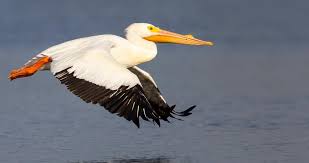by BA Nester
Yesterday I was talking about birds with some neighbors. One of them pulled out her iPad and showed me a wonderful picture she had taken at the lake in her backyard in Central FL. What a great picture!
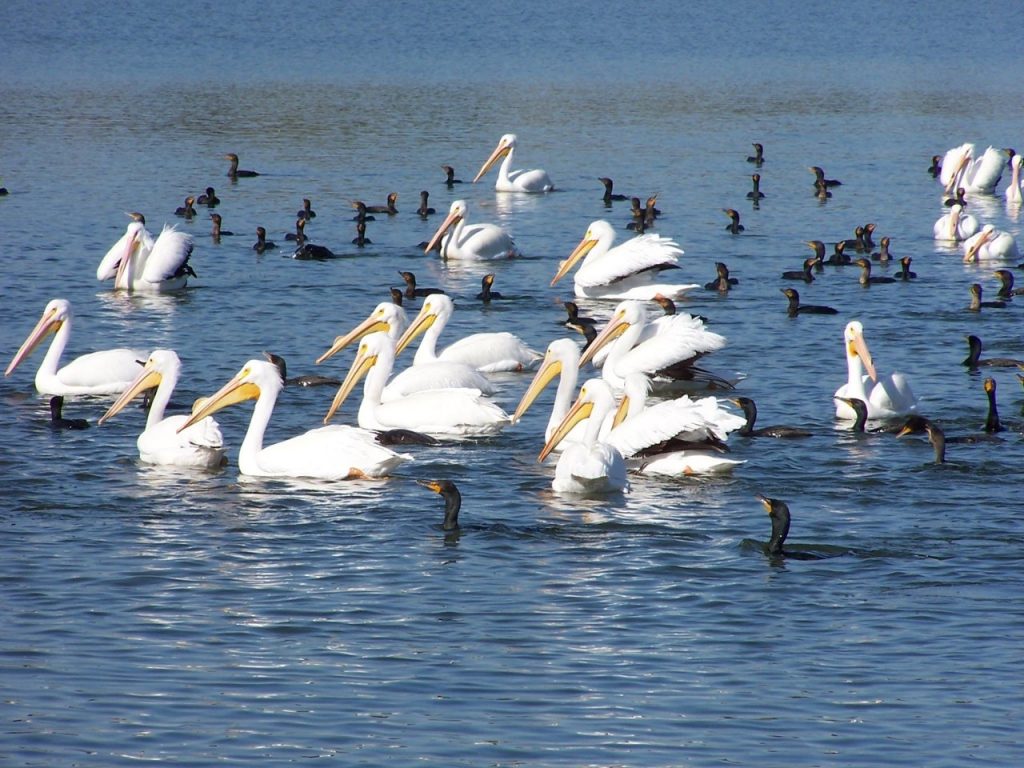
I always loved spotting American White Pelicans at Fort DeSoto, in Pinellas County, FL! Such a large, majestic bird! So, I thought I’d share this beauty with you and fill in some details!
The American White Pelican, Pelecanus erythrorhynchos, is one of the largest birds in North America, weighing in at approximately 14 pounds. These great birds can have wingspans of 9.5 feet! They have a typical pelican profile: short, thick bodies with long necks and large bills. They have short tails and short yellow-orange legs, but long, broad wings. Their bill pouches function as a straining, scoop net as they fish! They tip their heads forward to drain out the water, then throw their heads back to swallow their catch whole! I’ve seen fish wiggle around in a pelican’s neck! Remember the Ogden Nash poem?
A wonderful bird is the pelican.
His bill can hold more than his belican.
He can hold in his beak
Enough food for a week,
But I’m damned if I see how the helican.
While they may waddle around on land, they are magnificent in the air with their striking white bodies with black flight feathers. It is a photographer’s delight catching a squadron of them flying in formation!
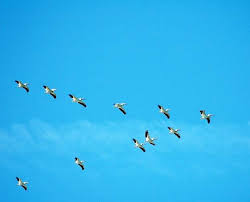
While checking my facts I came across this quote in All About Birds from Aldo Leopold’s Sand County Almanac, a favorite read when I was young, “Let a squadron of southbound pelicans but feel a lift of prairie breeze… and they sense at once that here is a landing in the geological past, a refuge from that most relentless of aggressors, the future. With queer antediluvian grunts they set wing, descending in majestic spirals to the welcoming wastes of a bygone age.”
American White Pelicans are usually group feeders, working in concert with one another to drive the fish into the shallows where they can scoop them up. You will often see DC Cormorants feeding with the pelicans, taking advantage of their group fishing techniques. The cormorants are often the victims of the Pelican’s well-practiced thievery!
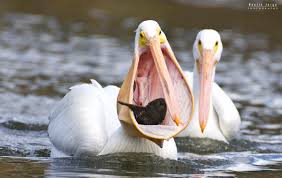
So often we associate Pelicans with the coasts, but I was always thrilled to see the White Pelicans in the midwest, flying over or in the Mississippi backwaters, as they migrated to their nesting territories. White Pelicans will travel great distances from their wintering grounds in the south and along the coasts to their very limited number of breeding grounds – approximately 60 breeding colonies – in Canada and some upper Western states. The American White Pelicans build their nests on the ground, in flat sandy, gravelly soil. They use their bills to move the soil around to create a nest about 2’ across with a surrounding rim about 6” or 8” high. The females lay 2 eggs and if they both hatch, only 1 chick will survive as the stronger chick will kill the weaker.
Interesting information about the chicks from All About Birds: Pelican chicks can crawl by 1 to 2 weeks of age. By 3 weeks they can walk with their body off the ground and can swim as soon as they can get to water. Older chicks move up to running, then running with flapping their wings, and by the age of 9 to 10 weeks, they can fly.
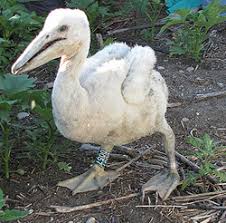
Ungainly as they are, when they grow up, they turn into magnificent beauties as they soar through the skies!
The American White Pelican is rated 11 out of 20 on the Continental Concern Scale and their status is classified as Moderate Concern. As usual, nest disturbances by man and habitat loss are the main culprits in this glorious bird’s future. Protecting our shallow wetlands is a main concern of birders for all our favorite waders and divers! Watch the migration charts and keep your eyes on the sky in your search for the mighty American White Pelican!
